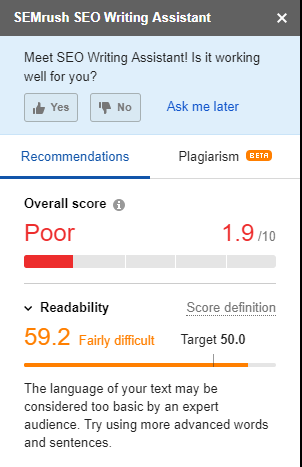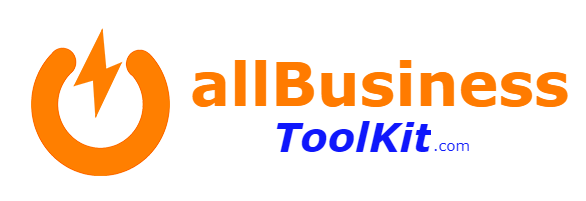Ever since I started SEO, and even to this day, I ponder about the many technical aspects.
But first, what is On-Page SEO? The most common description is that On-Page SEO refers to those activities that happen on a single web page only. This includes both enhancing the content and source code on that page to rank higher and get relevant traffic.
Keep reading to learn the ALL the factors that you must optimise during your on-page activities…
1. What is On-Page SEO?
The on-page SEO is creating a single webpage that is both engaging to the audience whom you wish to target. As well as being structured in a way that the Google bots are able to crawl and understand.
This is why you want to focus your On-Page SEO around enhancing the content and source code.
In this article, I have broken down all the technical aspects into five key areas of consideration.
- Domain URL
- Keywords
- Content
- Technical
- Links
I have outlined all the considerations and discussed the factors that are underpin these areas.
2. Why is On-Page SEO Important?
Two areas make On-Page SEO important are winning the new visitors (people that have come to your website for the first time), and returning visitors (people that visitor two or more times).
This is because a good On-Page SEO develops your webpage reach, visibility and trust.
The first, Google has to understand your page and the theme of the page. However, this makes it difficult through bad coding practices, tagging, schema and unclear page structure.
Therefore, you want to think like a Google bot and make the information they need to assess your page easily accessible.
The second is that Google values useful content that solves a person’s problem and provides them with a good solution.
Therefore, you apply these recommendations and it actually improves your content and your writing ability.
I am sure you want to deliver as much value to your audience. However, there are a lot of people that just want the clicks.
These people are easy to beat in the search engine results page if you apply Google’s On-Page recommendations.
By doing so you will have some really good-targeted content, that Google and visitors can read and understand clearly.
By doing so will provide and good user experience and Google will reward in the search results. Thus, you will have no problem beating people that try to trick the system.
By not doing so will get your website flopping and not visible to anyone.
3. Optimising domain URL / subject path
The Domain URL, or also subject path is everything after the root domain in a sites URL as demonstrated in the below image.
The domain structure for website

3.1 The Length of the URL
Ahrefs is a company that sell SEO tools and they specifically say URLs that are long and wordily may hurt a page’s ranking.
URL’s that are shorter perform better, which is backed up by solid research from many sources (MOZ, 2018; Soulo, 2018).
This is because really long messy URL’s are unpleasant to the human eye and take a lot more mental energy to process.
If I have to think harder than I should then it is not providing a good user experience to me.
So, keep them short and straight to the point.
3.2 Ensure a clean directory
A clean directory means it is not spammed with keywords or string of numbers and special characters.
SearchEngineLand shows research that a cleaner directory has higher click through rates.
Having higher click through rates mean more people are clicking your links over your competitors, which in turn means increased authority (Martineau, 2018).
So make sure to keep your URL short, and punchy as possible.
3.3 The URL Level
Neil Patel (an online marketing guru) says that a page that is closer to the homepage directory may have a slight edge over those pages that are lost our of a visitors reach.
This is because it is telling Google that you do not consider this page as important.
Otherwise, you would make it more accessible.
If you do not have much confidence in the pages importance then neither will Google.
I have seen the amount of levels people recommend differ. However, the most common recommendation I found was that you do not want more than three levels.
This means you have to go through two clicks to get to that page from the home page.
3.4 Categories placement in the URL String
By having, categories in the URL string make it easier for you and Google bots to decipher the topic of the page.
But, this come at a price.
We have already discussed that URL length is a factor for user experience. This can make adding categories to the URL increase its length.
Example 1, allbusinesstoolkit.com/marketing/on-page-seo/
Example 2, allbusinesstoolkit.com/marketing/digital-marketing/on-page-seo
Example 3, allbusinesstoolkit.com/ on-page-seo
Which one you choose is a judgment of what the final URL length.
I personal approach this by trying to keep your URL as clean, punchy and direct to the visitors query as possible.
So, from this analogy I would choose Example 3, there are also other ways to tell Google of your page structure such as breadcrumbs and post category permalinks (we will get to this further down the page).
If you disagree with this then please leave your comment at the page below!
3.5 Parked Domains
A Google update in December of 2011 announced it to the public that they will decrease search visibility of parked domains (Google, 2018).
3.6 Keywords that appear in the URL
By having, keywords appear in the URL show relevance to the visitor and Google.
This is a common topic and is a very small ranking factor.
However, you want to include just ONE keyword in every URL for each page (Schwartz, 2018).
It is also said by SearchEngineLand to Include a minimum of 1 keyword specific to the page and have it as close to the home directory as possible (Sentance et al., 2018).
Example: https//:home/Keyword (for that specific page)/language
Directory example for products: https//:home/category/subcategory/product (keyword)/language
Overall, target one keyword per URL, have that keyword appear next to the domain, and do not keyword stuff.
3.7 Use Hyphens to separate words in the URL
Moz tell us, that if there is more than one keyword in the URL and they appear beside each other to use hyphens and separate them (MOZ, 2018).
You want to use hyphens to separate ALL words in your URL as it makes it clearer in general for the visitor.
If it is easier for the visitor then this is considered a better user experience.
This is because some words collected together can appear as different words and change the meaning of what the page is about.
This is especially common under circumstances when using words that are more complex or abbreviations.
3.8 Use static URLs over Dynamic URLs
By having, a dynamic URL is a page reset index for Google.
The URL will need to be indexed again as the backlinks will no longer be pointing towards that page and deliver 0 traffic.
By having, a dynamic URL changes the URL that Google search is pointing at, as this would require the new URL to be found and indexed again.
3.9 Use of 301 redirects when a URL is changed
If a page is generating any kind of traffic and you decide to change the URL then you need to make use of 301 redirects.
This will redirect the user from the old page to the new page.
However, these can only be done temporary and it is good practice to change all links pointing to that page.
Whenever a URL is changed, only temporary. Change the links at the source long term as redirect only direct 90% of the traffic.
4. Optimising Keywords
By optimsing keywords in the all the recommended places listed below, will signal to Google that the page is relevant to that person’s search query.
Optimising keywords are all signals of relevance.
4.1 Keyword in the URL
I have spoken about the keyword appearing in the URL above.
However, in brief you want to ensure that you have a minimum of one keyword in your URL that you want to rank for in that page and it is as close to the root domain as possible.
4.2 Keyword in the Title Tag
The title tag is what people see in Google search once they have made a search query.
The title tag is the number one deciding factor that makes a person want click your query.
This means you want the title tag to be as relevant to the search query as possible.
There is no better way to do this than making sure the keyword is present.
According to Backlinko,2018 it does have a ripple effect on the amount of clicks your link receives.
As clicks, mean traffic.
4.3 Keyword at the beginning of the Title Tag
Keywords at the beginning of the title tag outrank those title tags where links appear later on in the title tag (MOZ, 2018).
4.4 Keyword in the Description Tag
The description tag is that snippet of text that appears below the title tag in the Google search.
It is used to elaborate about the topic in question.
It is good to have a keyword in the description tag because it shows the reader that they can be sure the page will have the answer to their query.
This provides a sense of engagement and trust to click.
4.5 Keyword in the Meta description and tags
Google has not used keywords located in the Meta description tag for a long time now.
However, they can be a good way to organise your content posts if using CMS like Word Press.
4.6 Keyword in the H1 Tag
H1 tags are described as the second title tag.
These appear at the top of the page and usually read the same as the title tag.
But, it is the first signal to your visitor that your page is relevant to the links they have previously clicked.
If the H1 tag does not match the previous query then the chances are that the visitor will bounce before even looking further (Butterworth, 2018).
4.7 Keyword in H2, H3 Tags
By having your keyword to appear in your subheadings tells Google that the subheadings are relevant to the main theme of the page.
Ensuring your add keywords in your subheadings also ensures your copy under that subheading is relevant.
This can actually will improve your right skills as a whole.
It is described as a weak relevancy signal but could boost you above your competitors that do not do it (Youtube, 2018).
4.8 Density of the keyword
You want the keyword to appear multiple times in your text copy.
However, keyword stuffing can hurt your ranking so you have to ensure has an average density of 3%.
Using tools like SEO Yoast work this out for you to save time.
4.9 Keywords that appear in the first 100 words
Having a keyword appear in the first 100 words of content is correlated to first page Google rankings (Soulo, 2018).
Actually, SEO Yoast tells us to ensure the first word in the keyword in your copy.
4.10 Quantity of ranking Keywords Page Ranks For
If the page ranks for several other keywords, it tells Google a sign of quality.
4.11 Latent Semantic Indexing Keywords
LSI keywords sow the relationship of your topic and other related items on the page.
This is a signal that the content has a lot of depth as well as determining the meaning (for example, Apple the computer company vs. Apple the fruit).
The presence/absence of LSI probably also acts as a content quality signal (wikipedia, 2018).
4.12 LSI Keywords in Title and Description Tags
As with webpage content, LSI keywords in page Meta tags probably help Google discern between words with multiple potential meanings.
However, you want to be careful by adding to many LSI keywords because it can reduce the customer experience.
4.13 Keyword in Alt text Tag
Alt text acts as anchor text for images so including a keyword is a relevancy signal.
5 Content Optimisation
So this is kind of common sense and if you are using Yoast SEO plugin then you probably already know everything I will talk about regarding content.
However, I will give it my best shot to teach you something.
5.1 Meta-descriptions
It is recommended by MOZ to have Meta descriptions between 50-300 characters.
This is so they are long enough to be expressive but not too long that it cuts off the description in the search engine result page (moz, 2018).
5.2 Term frequency-inverse document frequency (TF-IDF)
This terminology expresses the density of a keyword on the web page.
The more times that word appears on the web page in a natural way suggests that it is a suitable theme for the page.
Google most likely uses a sophisticated version of TF-IDF for webpages (Google, 2018).
They will also identity if you are trying to spam and cheat the system.
Nevertheless, do not do that because Google will punish you, and you will end up being thrown out of the index, as well as, not serving your customers.
5.3 The Length of content for SEO
Skyscraper content and meaty content best serves your users.
Google likes Content that can cover wider depth of explanation.
This more words on a page will most likely cover a topic in more detail.
Thus, being greater quality than shorter thin content.
SEM rush found that the average first page results contained approximately 1,890 words.
However, do not stop there!
You will better serve your visitors, if you aim to write quality and original posts that are 5000 words and sit back and what happens.
5.4 Cover Topic In-Depth
By covering a topic in depth, you naturally rank for those LSI keywords (associated words).
We have already discussed pages that cover a topic in more depth are known to rank better.
In addition, I was looking on a website called Hubspot, and they suggest this changes how people rank.
They suggest by covering a topic in depth, your page will appear in all kinds of searches related to that topic, rather than the keywords you have optimised (hubspot, 2018).
5.5 Table of Contents
Since the dawn of time, we have had table of contents and for good reason.
Table of content is very helpful to find a specific piece of information.
By adding, a linked table with anchor-text will improve user experience and help Google better understand the type of content on your page (MOZ, 2018).
5.6 Entity Search Matching Result
An entity search is a search that is about a real thing and all real things have attributes.
For example, a person (an entity) has an age (an attribute).
This makes more sense if you were to conduct a search about a celebrity…
…let us say, Brad Pitt.
Your search query consists of wanting to know his age.
If your search result is good enough and selected then you will appear as rank 0 (United States Patent, 2018).
5.7 Don’t duplicate on-site Content
Even if content has been slightly modified could harm your SEO (Google, 2018).
Keep every page as original as possible.
5.8 Rel=Canonical
There are at least four versions of a web page.
You got Http, Https, www, and none www.
By adding, a canonical will tell which version you want Google to index.
I also index the https://www version.
This can aid you if there are reasons for duplicating content (google, 2018).
5.9 Image Optimisation
Google use file name, alt text, title, description and caption to rank in Google images (Google, 2018).
5.10 Up to date Content
Google prefers most recent content as content that has been dated over a longer period can no longer be accurate (Google, 2018).
5.11 Size of Content Updates
If there are large amount of edit to a page is also recognised to Google as a freshness factor.
Adding a removing section of a page is greater served in ranking than just changing a few words.
5.12 Frequency of page updates
If a page is updated frequently over time is a ranking factor. If a page is updated 2 or 3 times a month demonstrates to Google that this page is being maintained and fresh.
5.13 Spelling and Grammar
Google uses a readability score and spell checker to outline how well the copy is written.
A common algorithm to check the score of copy is called the Flesch–Kincaid readability tests.
These determine how readable copy is and produce a readability score.
SEMRush (writing assistant) and SEO Yoast actually have an additional functionality to improve your copy.
Example: of SEM rush writing assistant

The readability of the copy is performing at 59.2, which is extremely high (which has been extracted from the clickfunnels website). The overall score takes into account other factors such as keywords, and LSI.
As you can see, it gives you a readability score and lots of information. But, you have to pay for this product.
A better way is using Microsoft Word spelling and grammar or SEO Yoast.
5.14 Level of reading
This includes a flesh reading ease score of over 60, according to SEO Yoast.
5.15 Passive reading
This includes a passive reading score less than 10%, and active reading score of 90%.
This is because active voice is more engaging and exciting to reader providing a higher user experience.
5.16 Duplicated Content Cross Site
If content has been scraped from another already indexed source, it will not rank as well as the original, or may not even be indexed at all.
This has just recently happened to me; I was changing domains and missed some canonical tags.
Those pages were not indexed.
However, the good news is that this is not a penalty.
5.17 Content that is hidden
Hidden content is commonly seen on mobiles.
It has be said by someone who works at Google that content is not visible is okay.
But, also stated that all content should be visible (YouTube, 2018).
On allbusiness ToolKit, we hide the side bar on mobiles to provide a better user experience. If you have insight to this then please leave a message in the comments below. J
5.18 Content Hidden Behind Tabs
Content hidden behind tabs may not be indexed (Schwartz, 2018).
5.19 Web page functionality
If a web page has helpful supplementary content such as currency converters, calculator is a quality factor.
Neil Patel has shown his traffic boom from bring out his own free SEO tool called the Uber Suggest.
5.20 Images, Gifs, videos and Media
Content that has multimedia on the pages is proven to engage users. Google regards this as quality.
5.21 Citing sources
Citing what references and sources have been used is a sign of trust.
It is good practice to cite any sources that are expertise/or authorities sources that relate to your content.
However, Google say external links are not a ranking signal for linking out to these sources (Schwartz, 2018).
5.22 Bullets and Numbered Lists
Bullets and numbering help structure your content in a way a visitor can digest lots of information quickly.
Anything that improves the user experience may enhance ranking.
5.23 Types of content
Google may be able to understand the difference between Quality and Useful content (Schwartz, 2018).
5.24 User reviews/Site reputation
Not only can user reviews provide you with some good user generated content, the gold stars it provides in the SERP is known to increase click-through-rate. But, it can be a way for Google search engine to understand the legitimacy of your website.
5.25 Titles match content body
However, if the website is illegitimate or low quality, and the content doesn’t matched the keyword you have highlighted in the domain name then due to the EMD update it will not get the top rankings you aim for.
6 Technical Optimisation
6.1 Page Loading Speed
Google bots can estimate the loading speed of your page from the pages HTML code (webmastertools, 2018).
6.2 The loading speed of Google Chrome
The speed a webpage loads is a User experience factor. This is because 50% of users will only wait 2 seconds or less before they bounce.
Google chrome can measure a page loads and this data is then utilised.
6.3 Use of Accelerated Mobile Pages (AMP)
Using an AMP will increase speed and performance across sites if enabled (ampproject, 2018).
6.4 Mobile friendly Pages
Web pages that are mobile friendly will be rewarded.
Mobilegeddon is a tool to assess those websites (wiki, 2018).
Mobile optimised pages will rank in Googles Mobile first.
6.5 Well coded webpage (w3c validation)
If a website has HTML errors indicate a poor-quality website.
6.6 Domain Authority
Domain authority tells Google about how trust worthy that website is.
This is based from the types of site that link to this site.
A page will rank higher when sat on website with a higher domain authority (Schwartz, 2018).
6.7 Page Category and Breadcrumb
This is a relevancy signal if a page is located under a related category and breadcrumb.
6.8 Heading and content Tags
According to Yoast setting your H1, H2 and H3 prvides a good content format and considered a user experience factor (yoast, 2018).
6.9 Sitemaps
A page is given priority when a website has a sitemap (sitemaps.org, 2018).
6.10 Page Age
Google deemed older web pages as higher quality.
An older page with fresh content will outperform and newer page.
6.11 User Friendly Layout
Providing a good layout for your content makes it easy for users to scroll through your page and get access to the most relevant parts.
Especially those pages that are meaty.
This provides a good user experience to your users will gain you ranking.
6.12 Schema
Adding apge schema can help google understand your page content and deliver you webpage to more targeted search queries.
6.13 Canonical
URL can be seen differently from a user perspective opposed to a google crawling capability. Canonical can be visibly different from the URL MOZ States. It is said by Google if there are multiple variations of a URL pointing to the same page google will decide which page to choose as the authority page. If this is the case, according to SEO Yoast then google bots may miss pages and fail to index links on higher level pages.
7 Links for On-Page SEO
7.1 Outbound Link authority
By linking out to other trustworthy sites sends a signal of trust (SearchEngineJournal, 2018).
7.2 Outbound Link Theme
The Hilltop Algorithm has said Google theme outbound links and see if the theme correlate to the theme of your web page.
7.3 Number of Internal Links Pointing to Page
The number of internal links to a page indicates its importance relative to other pages on the site.
7.4 Too Many Outbound Links
If your webpage has, too many outbound links then this can harm your ranking.
It is a sign of quality if a webpage has many outbound links as it may distract visits.
7.5 Authority of Outbound Links
You need to ensure the sites you link out to have an established authority, otherwise this can harm your SEO (Dholakiya, 2018).
7.6 Quality of Internal Links Pointing to Page
By having website pointing to your page with high authority will increase your rankings over a site pointing towards your site with a low domain authority (Moz, 2018).
7.7 Broken Links 404 error
Having broken links on a web page can be a sign of low quality.
7.8 Affiliate Links
Google does not like affiliate sites with content that has been copied (Google, 2018).
8. On-Page SEO Spam Factors
8.1 Linking out to websites that have been penalised
Websites that have been penalised by Google is because they have conducted bad SEO practices and deliver little to no value to google users.
Your users will not gain much value if you link them out to these sites also. So, overall you do not want to link you visitors to bad quality sites, but also this could hurt Google reputation by referring your domain to their users.
8.2 Cloaking
Cloaking is adding sneaky redirects on your site. Google will penelise your site if you so this because it provides different content to your users than it does to google botrs.
Web developers understand quite well how Google analyses your website, and they can trick google in two main ways.
The first way a web developer (black hat), would can do this is by serving content to bots whilst, displaying spammy ads to visitors.
The second way is inserting keywords into a page when a search engine requests the page and not a visitor.
8.3 Popups Ads
I am sure you have visited a site with pop up ads, and I think we can all agree that they are very annoying.
Google also agrees, as they state in their guidelines that pop ups is a sign of a web site that is of low quality.
8.4 Popup ads for mobile
This is a bit uncertain but it is not worth the risk.
Websites that display full screen ads for mobile users may be considered low quality web site.
8.5 Over-Optimization
Yes, Google does penalize people for over-optimizing their site. This includes, keyword stuffing in the content, header tag stuffing, URL extention stuffing.
8.6 Keyword stuffing
This includes the header tags, URL extension, body content and meta description.
8.7 Gibberish and auto-generated Content
There are content automation artificial intelligent applications that can write content for you. However, the content they produce is low quality and does not make sense.
Google will filter out these pages in their index.
8.8 Doorway Pages
Google is only looking to prioritise those pages that directly meet the search criteria.
Doorway pages are pages that act like a menu, and link visitors to other pages.
If your page is directing vistors to other pages then this is a doorway page. If these pages are found in the search, the visitor has to go through an extra click to get to the desired page.
Google does not like these pages.
8.9 Ads Above the Fold
We refer to the fold as the part of the webpage we see on first load (usually the top half).
If ads cover, the area above the fold is a sign of low quality.
8.10 Cloaking Affiliate Links
Affiliate links can be a URL that you put on your page which lead visitors to a product by which you get a commission.
Google does not like websites that put revenue over customer experience and so web developers may tried to hide these links with cloaking.
As discussed cloaking may bring your site a penalty.
8.11 Fred
Fred is a Google update that targets low-value content sites that put revenue above helping their users.
If you get hit by Fred you may not appear as high in the SERP.
8.12 Affiliate Sites
Google does not like affiliate websites and there is a general consensus that websites that leverage affiliate programs suffer in the SERP.
8.13 Empty content
if a page exists that have nothing on them but just has links to other pages will get hit by Googles Panda.
8.14 Excess PageRank Sculpting
Sculpting is the process of nofollowing outbound links. If a person obsessively blocks all outbound links may be a sign of a gaming the system.
8.15 IP Address Flagged as Spam
If your website gets a penalty for being spammy then it may
effect your domain and server IP address. This will then affect all the sites
on that server
IP.
This can be problematic if you are a small blogger, or business and you use a third party server.
8.16 Meta Tag Spamming
Meta tags are the are snippets of HTML that describe the topic of a page and its content. Even though this text doesn’t appear on the page people are able to stuff target words in them.
However, Google no longer uses meta tags as a ranking factor they may indicate spam if someone stuffs keys words there and give the site a penalty.
8.17 Combination of the same articles
If a website repeats articles trying to optimise similar keywords, or a variation of the same keyword will get a penality.
8.18 Content scraping
Contetn scraping involves using tools to copy tect off the internet.
This is often done on affiliate websites, by copy content from other sites. Google will filter out these pages.





